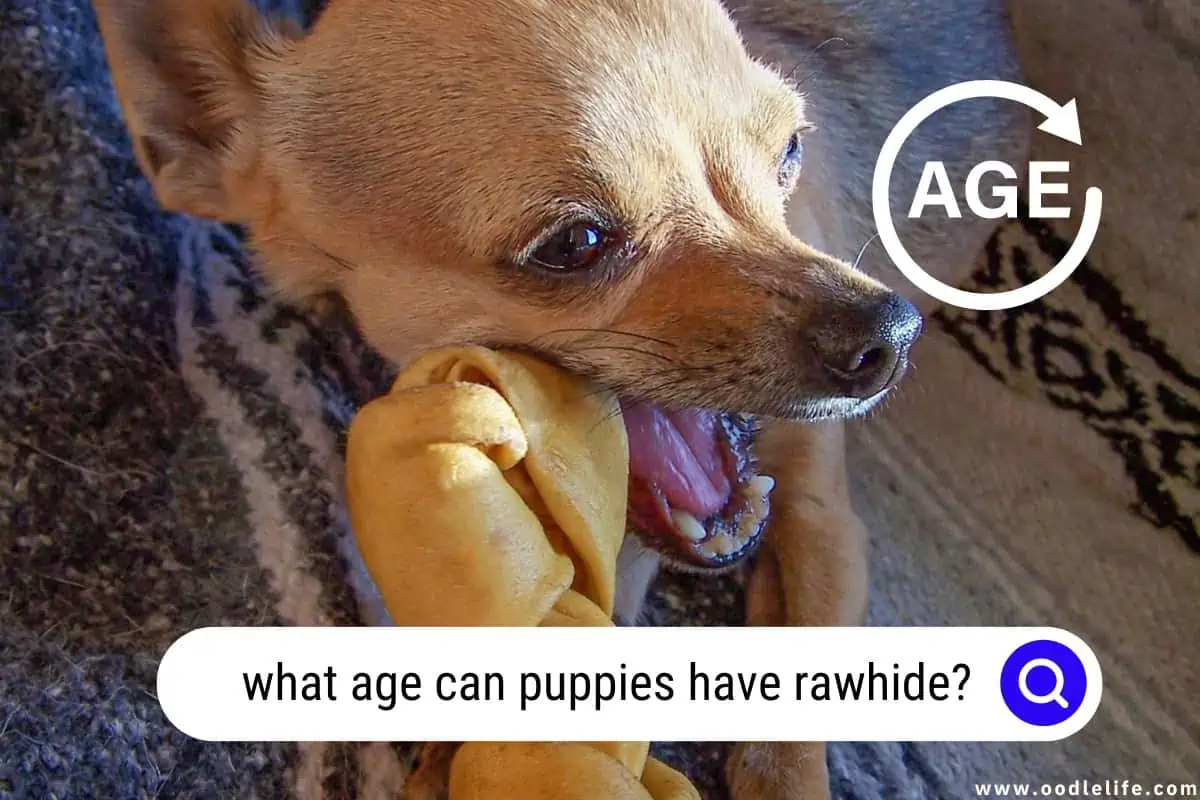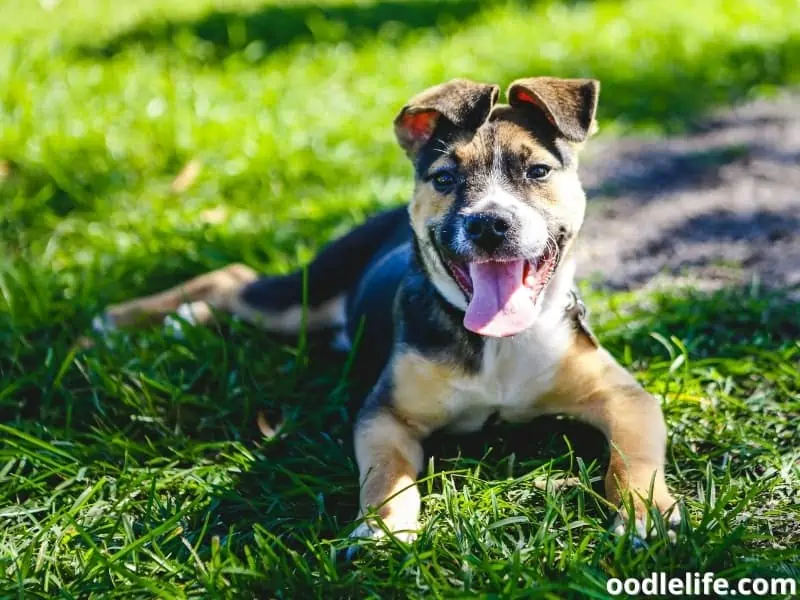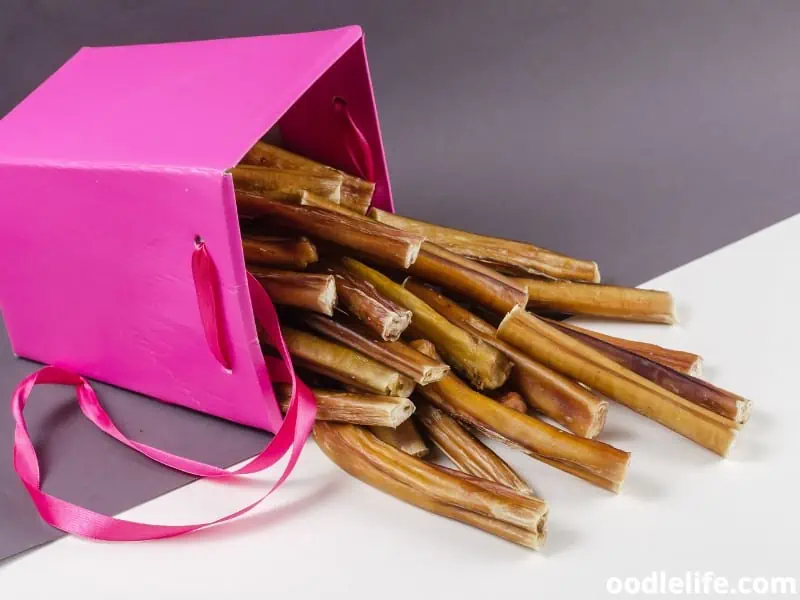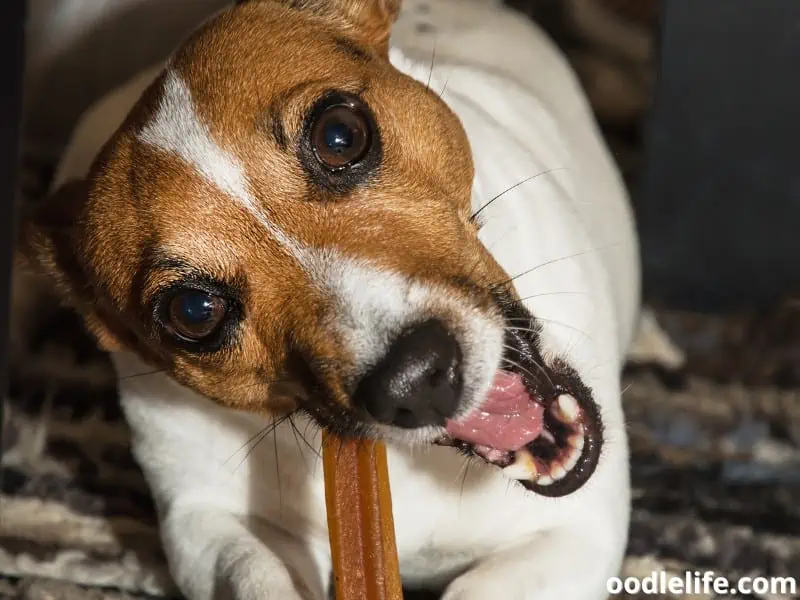What Age Can Puppies Have Rawhide?: Crucial Facts for Responsible Pet Owners
When it comes to providing treats and toys for our beloved furry friends, rawhide chews have long been a popular choice for pet owners. Known for their ability to help satisfy a dog’s natural instinct to chew, rawhide has been used for decades as a key component in many pet products. However, despite the popularity of rawhide chews, there is often debate and confusion surrounding the specific age at which puppies can safely enjoy these treats.
In this article, we will explore the appropriate age for puppies to have rawhide, and highlight some key factors to consider as you make your decision.

The topic of when puppies can have rawhide is of particular importance, as introducing these treats too early may pose potential risks to your pup’s health and development. As it turns out, puppies can technically start having rawhide around 6 months old. By this age, most puppies have their adult teeth, meaning it’s generally safer for them to chew on rawhide without causing damage to their teeth or gums.
However, it’s important to note that rawhide can be difficult to digest, and could potentially cause gastrointestinal issues if ingested in larger quantities.
With that in mind, it’s essential to approach the introduction of rawhide chews with caution, considering your dog’s breed, weight, activity level, and overall health. Furthermore, it’s always a good idea to consult with your veterinarian before introducing any new treats or toys to your puppy’s daily routine.
What Age Can Puppies Have Rawhide?
So, you’ve got a puppy, and now you’re wondering when it’s safe to introduce rawhide into their life. Great question! Let’s dive into the world of rawhide and puppies.

Puppies can technically have rawhide when they are over the age of 6 months. However, it’s not always recommended, and it’s important to consider a few factors. Before that age, rawhide can be too hard for their developing jaws and teeth, potentially causing permanent damage.
Now, you may be wondering, “Why wait until they’re 6 months old?” Good question, dear reader! By that age, most puppies have their adult teeth, making it safer for them to chew on rawhide without damaging their pearly whites or delicate gums.
But don’t start handing out rawhide like it’s going out of style just yet! Rawhide can be difficult for puppies (and dogs) to digest. As your puppy chews on the rawhide, it softens with moisture, allowing them to chew off pieces.
While that might sound like a good time, the hard-to-digest rawhide could cause some not-so-pleasant issues.
So, how do you decide if rawhide is a good fit for your furry friend? Keep these factors in mind:
- Activity level
- Weight
- Breed
- Overall health
When in doubt, give your veterinarian a call about your pup’s chewing situation. They’ll be able to provide more personalized guidance, ensuring that your little furball remains happy, healthy, and entertained by their chews.
In conclusion, the age to introduce rawhide for puppies is around 6 months, but it’s essential to consider various factors and consult your vet before making a decision.
Health Concerns and Risks

Choking and Blockages
One of the main concerns with puppies and rawhide is the potential for choking and intestinal blockages. Strong chewers can break off large chunks, which could pose a major choking hazard. Additionally, swallowing large pieces or consuming too much rawhide at once can lead to blockages in your pup’s digestive system, causing diarrhea or vomiting.
It’s important to supervise your puppy when they are chewing on rawhide and remove any small or broken pieces to prevent these risks.
Contamination and Bacteria
Another significant risk with rawhide is the possibility of contamination from bacteria like Salmonella and E. coli. This risk increases each time your pup has access to the toy, especially if they’re allowed to chew on it over days, weeks, or months. To protect your furry friend and minimize the chance of bacterial contamination, it’s essential to ask your vet about the appropriate amount of rawhide for your specific dog and to monitor their playtime carefully.
Teeth and Dental Issues
Finally, while puppies may enjoy chewing on rawhide during their teething stage, it’s necessary to consider the potential dental issues that can arise from it. Regularly consuming rawhide can lead to the build-up of plaque and tartar on your pup’s teeth, possibly leading to dental problems as they grow older.
To keep those puppy teeth healthy, consider discussing alternative chew toys with your veterinarian. Remember, every pup is different, and there isn’t a one-size-fits-all solution – just like you wouldn’t wear your friend’s shoes to a party, even if they were incredibly stylish.
In summary, rawhide chews can bring both enjoyment and potential risks for your puppy. It’s essential to stay informed and take proper precautions to ensure a safe and happy chewing experience.
Supervision and Size Considerations
When introducing rawhide chews to puppies, it’s essential to consider both supervision and the size of the treat. This helps ensure a positive chewing experience and minimizes any potential risks.

First things first: never leave your pup unattended with a rawhide chew. Puppies are known for their curiosity and eagerness to explore the world, and sometimes their chewing habits can get a bit carried away. Monitoring your furry friend while they enjoy their treat ensures that the rawhide doesn’t pose any choking hazards, and if needed, you can intervene swiftly.
Speaking of hazards, size matters when it comes to rawhide chews. Like Cinderella’s glass slipper, the perfect fit makes all the difference.
Rawhide Alternatives
Bully Sticks
One popular rawhide alternative for puppies is bully sticks. Made from dried beef pizzle, they’re both digestible and delicious for your canine companions. With a tough texture, they offer a good chewing experience, similar to rawhide, but without the risks.

Just remember to monitor your puppy’s chewing progress, replacing the bully stick with a new one when it becomes too small or dangerous to avoid choking.
Chew Toys
Another safe option for puppies in need of a chewing outlet is chew toys specifically designed for their age and size. These toys come in various materials, such as rubber, silicone, and nylon. Some even include compartments for treats or flavored fillings to keep your furry friend entertained for hours!

A great example of a puppy-appropriate chew toy is the well-known KONG Classic. So, not only will these toys provide a good chewing experience, they can also double as a fun game.
Dental Chews for Puppies
Dental chews are an excellent rawhide alternative that can satisfy your pup’s chewing instincts while promoting healthy teeth and gums. These chews are designed with ridges and grooves that help scrape away plaque and tartar as your puppy chews. Many dental chews also contain ingredients such as enzymes or abrasive materials to help maintain oral hygiene.

Just make sure to choose a dental chew specifically designed for puppies, as adult versions may be too hard. Brands like Greenies and Whimzees offer puppy-friendly options, so your tiny chomper can keep their pearly whites in tip-top shape.
With these rawhide alternatives, you can help your puppy satisfy their chewing urges without risking their health. Don’t be surprised if your little furball becomes a big fan of these safer options, leaving rawhide in the dust!
Rawhide Benefits and Usage
Rawhide chews are popular among dog owners, and for good reason. These treats provide several benefits for our canine companions, especially during their growing phase.

A common issue puppies go through is teething, which can be quite a tough time for both the puppy and the owner. Luckily, rawhide chews can help alleviate some of the discomfort during this phase. Chewing on
Safety and Quality Control
When it comes to rawhide chews for puppies, safety and quality control are crucial factors to consider. The production process of rawhide chews often involves the use of chemicals, such as bleach, to clean and preserve the product. As pet parents, we want to ensure that any rawhide we give to our puppies is safe and free from harmful ingredients.

To start, it’s essential to select rawhide chews from reputable manufacturers that prioritize safety and quality control in their production process. Trusted brands often use minimal chemicals and bleaching agents, ensuring that your puppy’s chew is safe and less likely to cause digestive problems or other health issues.
Here are some tips to help you choose high-quality, safe rawhide chews for your puppy:
- Look for manufacturers that use all-natural or limited ingredients to ensure fewer chemicals in the rawhide
- Opt for rawhide
Breed and Age Factors
When considering rawhide for puppies, it’s essential to take into account both the breed and age of your furry friend. Different breeds of pups have distinct chewing habits and strength, making it vital to choose the appropriate rawhide treat accordingly.

For example, smaller breeds like Chihuahuas and Shih Tzus typically have more delicate teeth and gums than larger breeds like Labrador Retrievers and German Shepherds. Consequently, providing a softer, more digestible rawhide option is important for these little ones to avoid any dental damage.
On the flip side, larger breeds tend to have stronger jaws that are ideal for gnawing on more rigid rawhides. However, some toy or thin rawhide chews might pose a choking hazard for them, so make sure to select bigger and thicker options that can withstand their powerful chomping.
Now, let’s talk about age. Puppies under six months old are not generally recommended to have rawhide, as their teeth are still developing and might not be able to handle such hard chews. Once your pup reaches the six-month mark, they likely have their adult teeth and are ready for some rawhide action.
But, as always, consult with your vet before introducing them to such treats.
Keep in mind that as pups metamorphose into adult dogs, their chewing habits might change too.